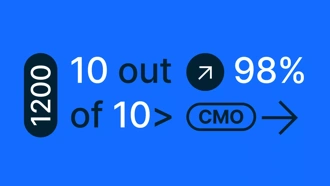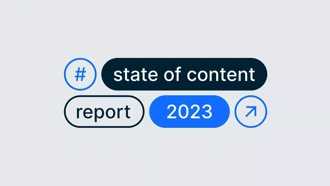As marketers geared up for 2017, it seemed everyone was taking a stab at predicting what the biggest trends for the year will be. But instead of focusing on what might happen or how things could be, it’s worth reflecting on what we know for sure: mobile is going to be huge. Again.
Even as I write this, I can almost hear the resounding “we know.” And it’s true, this is nothing new; mobile has been the trend to watch since Jobs knows when.
But the way consumers use their mobile devices is shifting, and that’s what is worth noting. Perhaps more importantly, it’s not just consumers’ whose habits are changing, but those of employees are, too.
The rise of work-from-home employees
In their predictions for the most disruptive trends of 2017, Forbes points out that the global workforce is becoming increasingly mobile as more and more people opt to work from home.
Another study performed by Gallup revealed that telecommuting has climbed to 37% in recent years. Employees aren’t just using their devices to catch up on emails anymore --they're running whole operations on them. Whereas in the past, mobile devices were primarily used for “telework,” or work that an employee would start in the office and then finish at home, employees now are “telecommuting,” meaning they’re working entirely from home.
The adoption of “bring your own device” (BYOD)
With employees favoring personalized mobile devices, the adoption of “bring your own device” policies has garnered considerable traction. David Willis, vice president and analyst at Gartner, remarks that “BYOD strategies are the most radical change to the economics and the culture of client computing in business in decades.” He goes on to cite the creation of new mobile workforce opportunities as one of the most valuable benefits such policies offer.
Other benefits include increasing employee satisfaction and reducing or avoiding costs. In fact, a study conducted by Global Workplace Analytics found that a typical business could save $11,000 per person per year if employees with compatible jobs and a desire to work from home did so just half the time.
The popularity of “third space” locations
Not only does the work-from-home trend pose economical efficiencies, it also enhances an individual’s productivity. In an article for the Huffington Post, Emma Davenport, head of Brand and Culture at Davenport Campbell, points out that “productivity needs to be measured in terms of deliverables as opposed to sitting at your desk.”
Third spaces, such as cafes or libraries, offer an ideal work environment for many individuals, combining the social preferences of both introverts and extroverts. Free from the formalities of an office but also away from the lulling comforts of your own home, third spaces introduce the perfect place to buckle down, get caffeinated, and produce some high quality work.
And how are the employees who opt to set up shop at these third space locations accessing their work networks and resources? You guessed it: mobile devices.
Adapting to the ever-growing mobile trend
Rather than push against the grain and insist on laptop use, the most feasible way to keep up with the accelerating popularity of mobile devices is to embrace systems that are phone/tablet compatible.
This means having portals on which all essential processes and resources are accessible in an intuitive and mobile-friendly interface. Business Insider found that as more employees use their own devices for work, they seek apps to help meet their productivity needs.
For marketers, some of your most valuable resources are your digital assets. You need to be able to access these digital assets at any moment, and share them with anyone when necessary.
Empowering access anywhere
One of the main obstacles to the ever-growing mobile trend is access. According to Forrester, there is a tendency for people to perceive the mobile internet as a scaled down version of the “real” internet. But we’re growing out of that mindset, and as our everyday habits become increasingly mobile, our work habits do too. To empower the mobile employee, it will be essential to keep processes intuitive, convenient, and mobile friendly.
Mobile digital asset management will be the next big step in making marketers’ lives on the go that much easier. Digital asset management systems allow you to find and use your valuable content more efficiently, and promise access to an organization’s content from anywhere in the world. Whereas in the past, that was limited to any computer in the world, now mobile digital asset management capabilities fulfill the promise of any digital asset, any time, anywhere.
All Bynder customers can download the app for free.
Go to Google Play or iTunes App store and read more about it.












